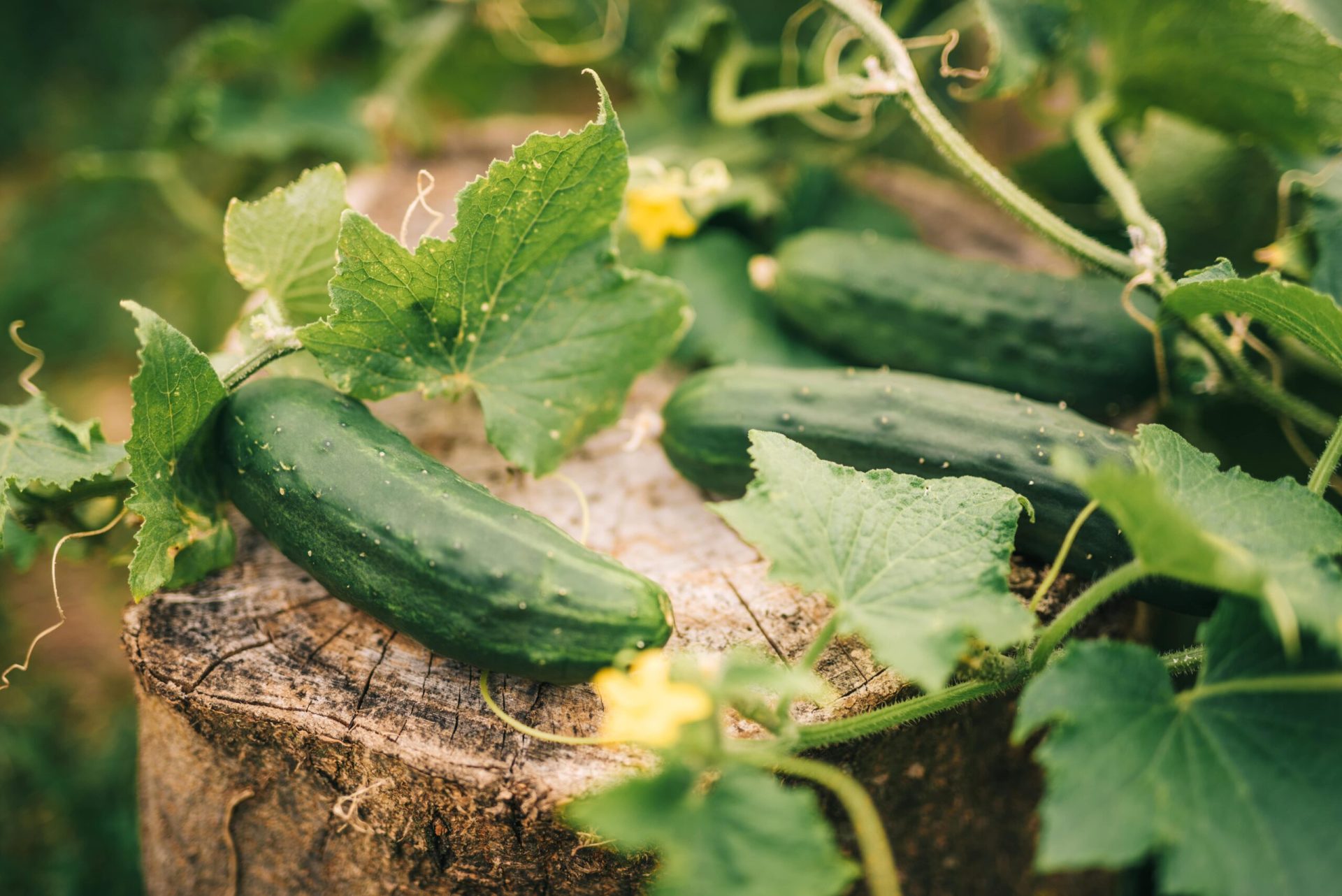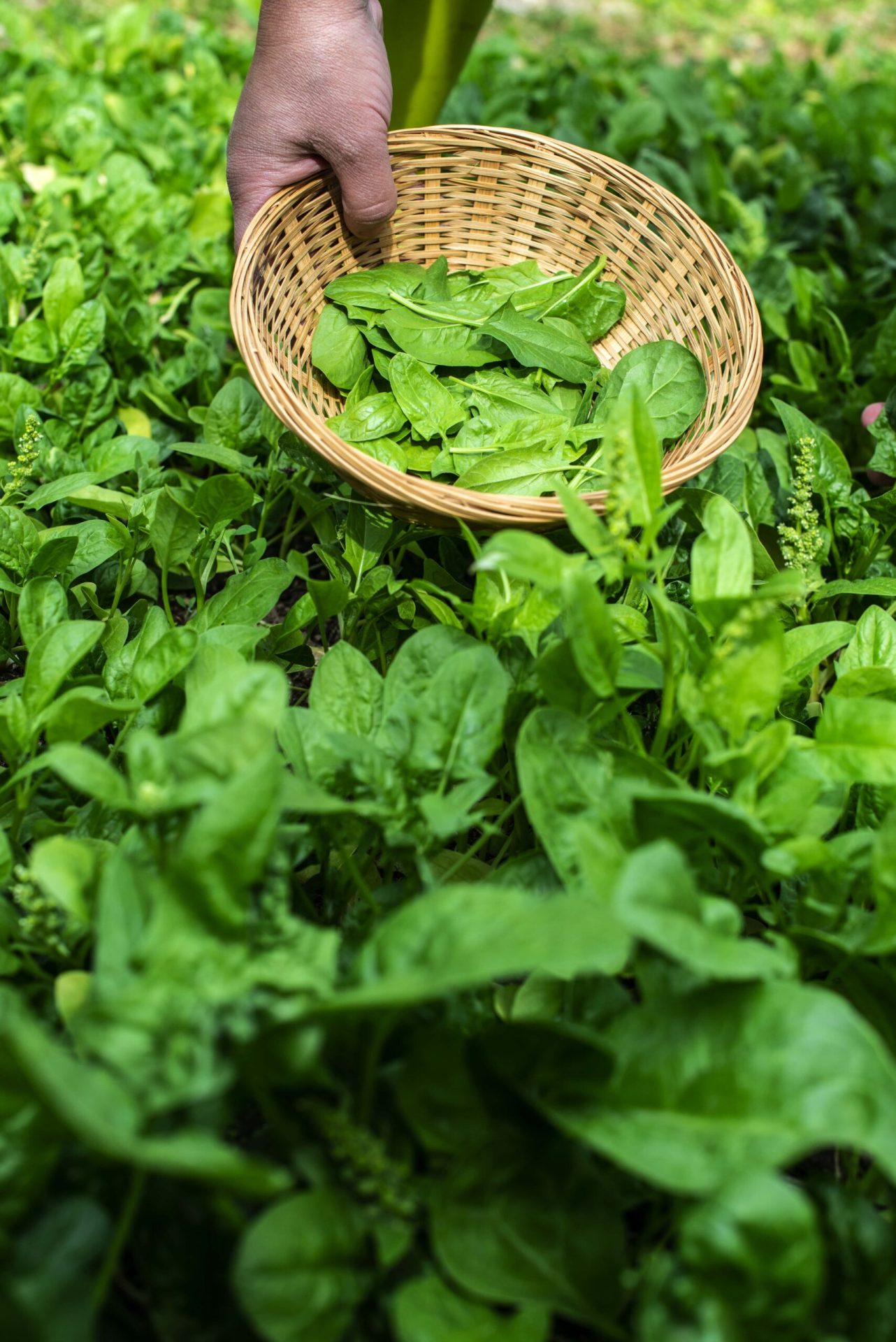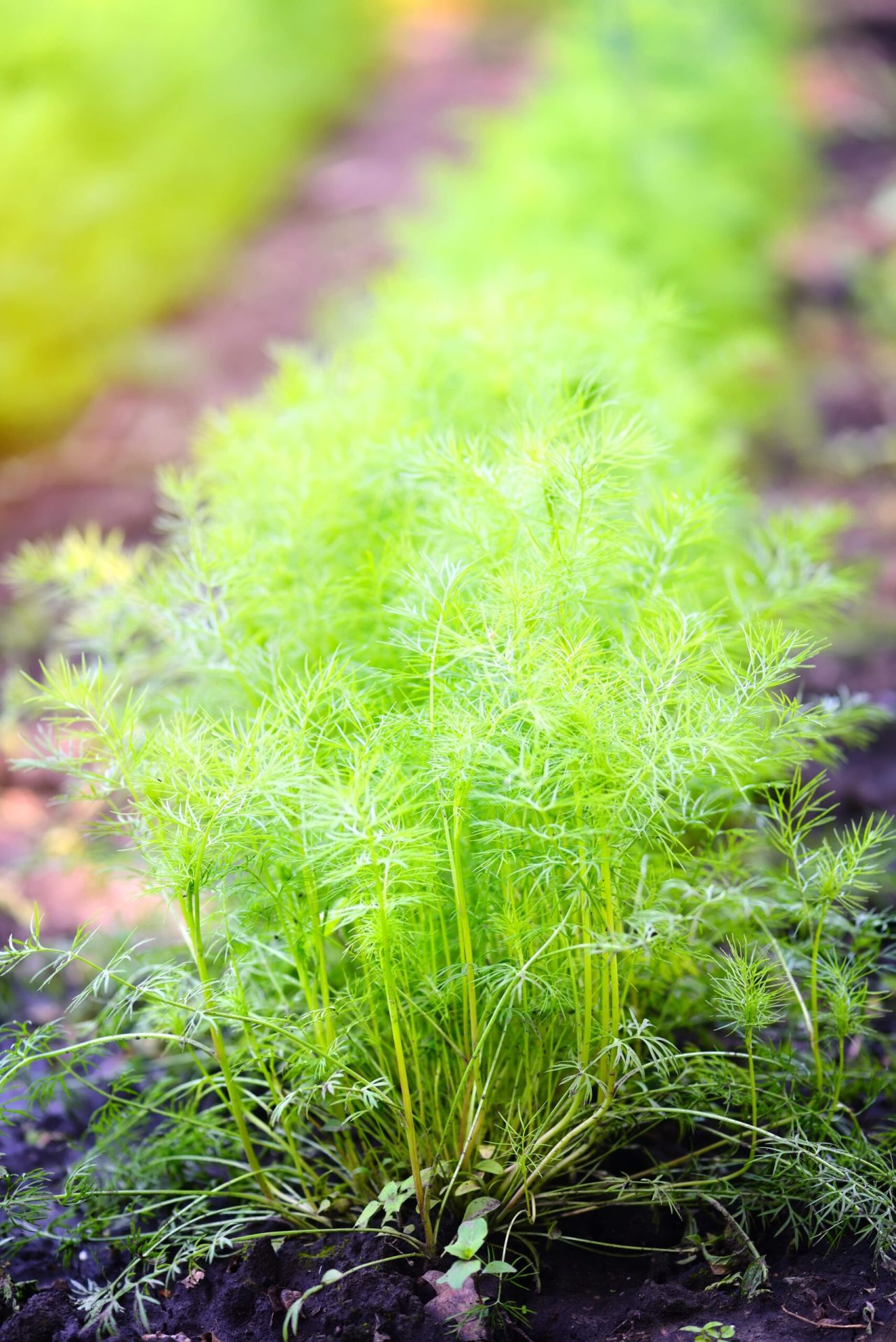Whether added to a salad, sandwich or pickled, cucumbers are a versatile crop and one of the easiest to grow in your garden. Not only are they easy to grow, but they also don’t require space and are an abundant producer.
Therefore, with little effort, you can produce cucumbers, with plenty to share with neighbors or friends. Interested in how to grow cucumbers? This growing guide covers it all: cucumber growing stages, tips for starting from seed, and trellising your cucumber crop to save space.
Growing Cucumbers 101: Step-by-Step Guide
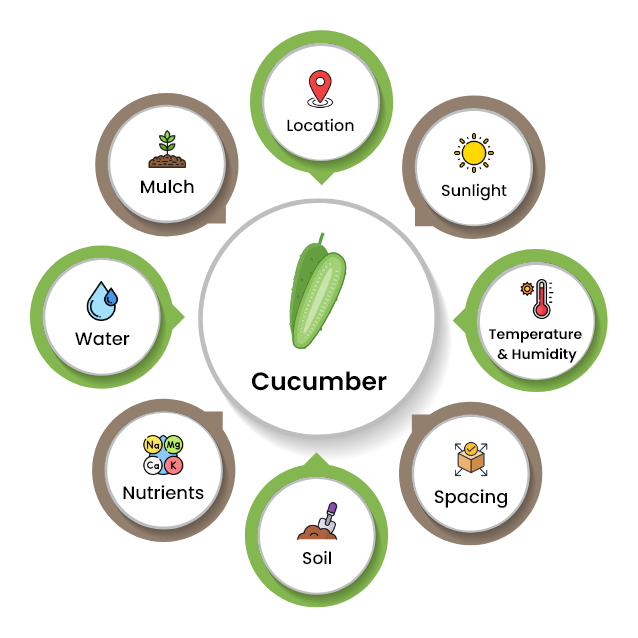
1. Location
Select a warm, sheltered, and sunny location with fertile soil. Ensure the location gets 6-8 hours of direct sunlight per day.
2. Temperature and Humidity
Cucumbers grow best at a temperature between 75 and 85°F. Ensure the humidity level is between 50-80%.
3. Spacing
Space seeds 12-18 inches apart and in rows 4 feet apart.
4. Soil
Cucumbers prefer well-draining, rich, and sandy soil. The soil pH should be between 6.0 and 6.5.
5. Nutrients
Incorporate organic matter and a complete fertilizer into the soil before planting.
6. Water
You should water young seedlings daily. Once the plants are established, they need at least 1 inch of water per week.
7. Mulch
Choose an organic mulch like hay, straw, compost, or shredded leaves. Spread 1 inch of mulch around the plants to improve water retention.
How to Grow Cucumbers from Seed?
Before you decide to plant cucumber seeds, assess the space you have. To grow cucumbers in small space gardens, it is best to go vertical and trellis your cucumbers.
- To speed up germination, soak the seeds in a wet paper towel or in water for about 24 hours.
- Sow the seeds at least 1 inch deep in the soil and 4 inches apart.
- Water them regularly to keep the soil moist. This will improve germination rates.
- Keep the soil moist but never let it become dry or waterlogged.
- Seeds germinate in about 4-10 days when soil temperatures are above about 65 degrees.
- Cucumbers are sensitive to frost. Therefore, you should not sow seeds or transplant seedlings outside until all danger of frost has passed.
How to Grow Cucumbers in Containers?
Picking the right container to grow cucumber is the most important step for a successful harvest.
- Select a container which can hold at least 5-7 gallons of potting mix and that has good drainage.
- Plant seeds directly in the pot about ½ inch deep.
- Sow two or three seeds per container and thin out the weakest seedlings once they have sprouted.
- Place the container in a location which receives at least 6-8 hours of sunlight per day.
- Feed the plants with a balanced fertilizer every 3-4 weeks or as directed on the fertilizer label.
How to Transplant Cucumber Seedlings?
Transplanting cucumber seedlings requires utmost care to minimize transplant shock and ensure healthy growth.
The best time to transplant seedlings is 3 weeks after germination and after the last frost. The seedling should have 2 sets of leaves: two cotyledon leaves and two true leaves. When you transplant seedlings at the right time, it helps improve the chances of a successful season and yield.
- Dig a hole the size of your plant’s root ball.
- Gently remove the transplants from their pot.
- Place the plant in the hole.
- Surround it with soil and compress firmly.
- Add a thick layer of mulch like straw, wood chips, or grass clippings.
- After transplanting cucumber seedlings, water the area deeply and slowly to help them adjust to their new home.
When to Plant Cucumbers?
- Sow cucumber seeds indoors 4-5 weeks before the last frost date.
- Transplant seedlings outdoors once soil and air temperature warms up.
- Directly sow cucumber seeds outdoors once the soil is at least 70°F.
- Be sure to wait until after the frost date to plant them outdoors and the temperature is above 65°F.
- Stagger plantings every few weeks in spring for a consistent supply of cucumbers throughout summer.
How to Plant Cucumbers?
Before you decide to plant cucumbers, ensure you have a spot in your garden with ideal growing conditions.
- Choose a site with full sun that receives at least 6 hours a day.
- The spot should be far from tree roots that might compete with your plants.
- Directly seed them in the garden or start seeds indoors in pots about 4 weeks before transplanting.
- For seeds germination, the ideal soil temperature is around 70°F.
- Sow seeds ½ inch deep, 2 seeds per foot in a 4-inch pot.
- For potted seedlings, keep one seedling per pot and cut the other one at the soil level.
- After the last frost, expose the seedlings to outdoor conditions.
- Transplant seedlings at night when the temperature is consistently above 45°F
- Space transplants 1 foot apart or thin directly seeded plants accordingly.
Cucumber Growing Stages
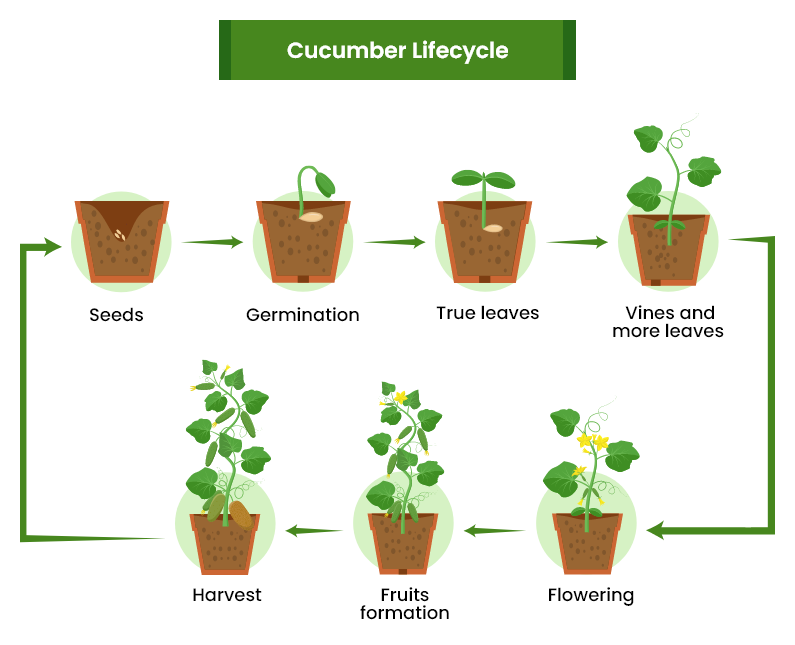
1. Seed
Sow cucumber seeds directly outdoors when the soil temperature consistently reaches 70°F. Cucumbers are sensitive to cold, after there is no risk of frost. Sow the seeds at least 1 inch deep in the soil.
2. Germination
During germination, the outer shell of the seed cracks open and small root emerges. It anchors the seed into the soil.
The emergence of the shoot follows. This includes stems and leaves, growing upward towards the light.
3. Seedling growth
The plant develops its first set of true leaves. It is different from the initial seed leaves that emerged during germination. These true leaves resemble the leaves of a mature cucumber plant and have a vital role in photosynthesis.
4. Foliage Growth
You will see rapid development of the plant’s foliage. In the growth stage, the plant’s vines get longer and grow more tendrils, leaves, and flower buds. The health of the plant’s foliage impacts the rest of the cucumber plant cycle.
5. Flowering
Pollination and initial development of the cucumber fruit occurs. Pollinators like bees transfer pollen from the male flower to female flowers during pollination. Once pollination occurs, the female flower will close, and the base of the flower will start to grow into a cucumber.
How to Harvest Cucumbers?
Cucumber is ready to harvest 50-70 days after germination (depending on the variety).
- Cucumbers are ready to harvest when they are firm, evenly colored, and have a glossy appearance.
- Harvest cucumbers when they attain at least 6-8 inches in length.
- The best time to harvest cucumbers is early in the morning when their vines are cool and damp with dew.
- Use a sharp knife, pruners, or clippers to separate them from the vine.
- To harvest cucumbers, remove the fruit with a sharp tool to prevent injury to the vine by twisting or pulling it.
- Cut the stem ¼ inch above the fruit.
- Harvest cucumbers frequently to keep the plant producing new fruit.
How to Store Cucumbers?
The method you use to store cucumbers can increase or decrease their shelf life. Its crisp texture plays an important role in this fruit’s appeal.
When not properly stored, this watery fruit turns soft, limpy, and squidgy. Cucumbers can stay crunchy in the fridge for about a week if you store them in the right way.
Follow below steps to store cucumber:
- Rinse the fresh cucumbers with cold water and dry them thoroughly.
- Wrap each cucumber in a paper towel to soak up water and prevent them from getting mushy.
- Place them in a zip-top bag or in an air-tight container to avoid them from drying out.
- Separate cucumbers from fruits like apples which release ethylene gas. This fastens the ripening process of surrounding veggies and fruits.
- Store cucumbers below 50°F can cause chilling injuries like mushy spots and faster spoilage.
- If you can’t store cucumbers in the crisper section in the fridge, store them in the warmest part of the fridge in the front.
Best Cucumber Varieties
Selecting the best cucumber variety depends on several factors like climate, growing conditions, and personal preferences. Several cucumber varieties exhibit productivity, taste, and adaptability.
1. Armenian cucumbers
The Armenian cucumber is long and slender compared to other varieties. It resembles white Japanese eggplants more than cucumbers! It is lightly colored, doesn’t have burps, and has deep ridges, which gives them a wrinkled appearance.
When you slice them and eat them raw and fresh as salads, they have a strong crunch. It has a soft texture and high-water content which makes it an ideal choice for salads. A strong aroma indicates that the fruit is ready to be picked or harvested.
2. Lemon cucumbers
This odd-looking cucumber has marbled yellow skin color and takes round shape on maturity. It has a strong but sweet cucumber flavor when eaten fresh or cooked.
Even though it has a thin skin, its hardy texture allows people to pick it easily. Despite the name it implies, it doesn’t possess a lemon flavor.
3. Kirby cucumbers
This cucumber variety is one of the most common varieties grown in gardens across the country. Stout and thick, its skin color ranges from yellow to dark green. It has a bumpy texture, and its flavor is strong enough to enjoy it raw or as pickles.
This variety has the best flavor profile when they grow up to six to eight inches long. They have a crunchy consistency and are excellent for salads or diced up for salsa.
Common Pests and Diseases Problems with Cucumbers
Diseases affecting cucumber’s growth are angular leaf spot, bacterial wilt, anthracnose, downy mildew, powdery mildew, cucumber mosaic virus. Pests that might affect cucumber’s growth are aphids, cucumber beetles, thrips, whiteflies, and spider mites.
To avoid pests and diseases with cucumbers, use crop rotation, water on time, and space plants properly. Use neem oil, insecticidal soaps, or organic fungicides as required to treat them. Removing infected plants prevents the spread of diseases to healthy plants.
Companion Plants for Cucumbers
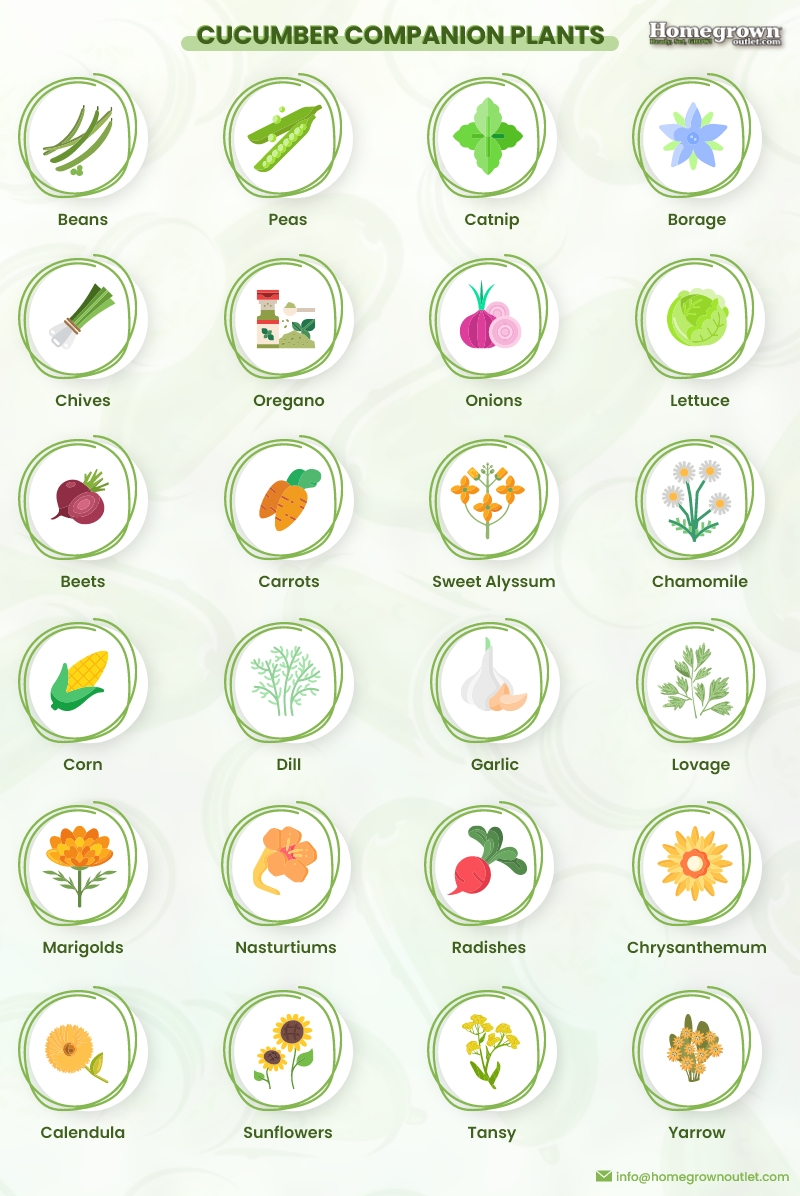
Companion plants help maximize the efficiency and health of your garden’s cucumber crop. Plants that can prove good companions for cucumbers are corn, dill, legumes, root vegetables, marigolds, nasturtiums, and sunflowers.
When choosing cucumbers companion plants, consider root depth, growing habits, and their needs. These plants create natural balance and promote healthy growth. They combat pests and provide vital nutrients to the soil. It helps boost harvest, attracts pollinators, reduces erosion, and keeps weeds down.

